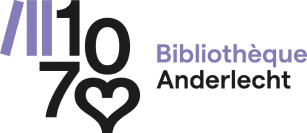Se connecter
Snaturamenti
LivreDisponible
Auteurs :
Flatform Auteur du texte
Flatform Auteur du texte
Prucca, Giuliana éditeur scientifique , Directeur de publication
Raimondi, Vito Directeur artistique
Publication
[Paris] : AVARIE, Artbooks vuoti a rendere intenational edition, 222
Année de parution :
0222
Importance matérielle
[128] p. : ill. en noir et en coul. : 33 x 24 cm
SNATURAMENTI is both the object and the device of the book of Flatform, a collective artist working on the border between contemporary art and cinema.
Transitional states of various types (spatial or temporal, geographical or historical, phenomenological or climatic) and the notion of landscape as a complex network of connections between human beings and other species form the base of their artistic and philosophical research practice. These questions become the very mechanism of deconstruction and reconstruction of Flatform's films on the page, as operated by the author and curator Giuliana Prucca.
The passage from the moving image to the still image in book-format generates in itself a form of "snaturamento", literally an alteration of the nature of the original work, which, however, articulates itself in a new landscape, where the initial meanings are displaced and alter not only the narrative structure of the film but also the classical form of the book.
As a "synthetic unity of multiples", the book borrows its own functioning from Georg Simmel's visual model of the landscape, to illustrate the coexistence of the various states even during their mutation and trace them back to the permanence of a unique and comprehensive image. The film disappears in the book, but persists as an implicit source of inspiration in favor of a dynamic montage of the materials "subtracted" from Flatform's archive. Drawings, texts, diary entries, layers, frames, alternative sequences, backstage photographs, and installation renderings intersect with Flatforms video production, in a poetic and non-mimetic exercise of their cinematographic techniques like compositing and audiovisual phase-shifing in order to narrate, and undermine, natural phenomena and laws of physics, redefine concepts of time and space, modify perceptive paradigms, transform the possible into the impossible - and viceversa, creating an unstable equilibrium between the foreseeable and the unexpected, between control and chance, between obsessive precision and error, or stumbling accidents.
Being not concept, but percept book, the book uses a series of graphic artifices to reposition the reader/spectator at the center of the real experience of the landscape and of the reading, which is not visual or contemplative, but tangible and immersive.
Being not artbook, but workbook, working tool and instruction manual, it builds and at the same time reveals the mechanics of the pages, whose intent is no longer to show, but to reactivate the act of looking to bring forth a new vision from the image's blindness.
In a territory of perpetual transitions, the book loses its cover, and thus the perimeter which defines its beginning and end. The content is externalized and, at the same time, we are directly immersed in it, with the sense that something begins or ends elsewhere, offscreen, or anywhere, thanks also to the gradually shifting book sections that mirror the circularity conveyed by the work of Flatform. The result is a configuration of four different and independent versions, which carry in them the latent possibility of being reunited. The performativity required of the reader to recompose the fragments in their entirety gives the book an interactive and installational dimension on a par with Flatform's environmental works; it expands it, projects and verticalizes it in an exterior volume, further "denaturing" - "snaturando" its horizontal sequential quality and displacing it in an exhibition space.

